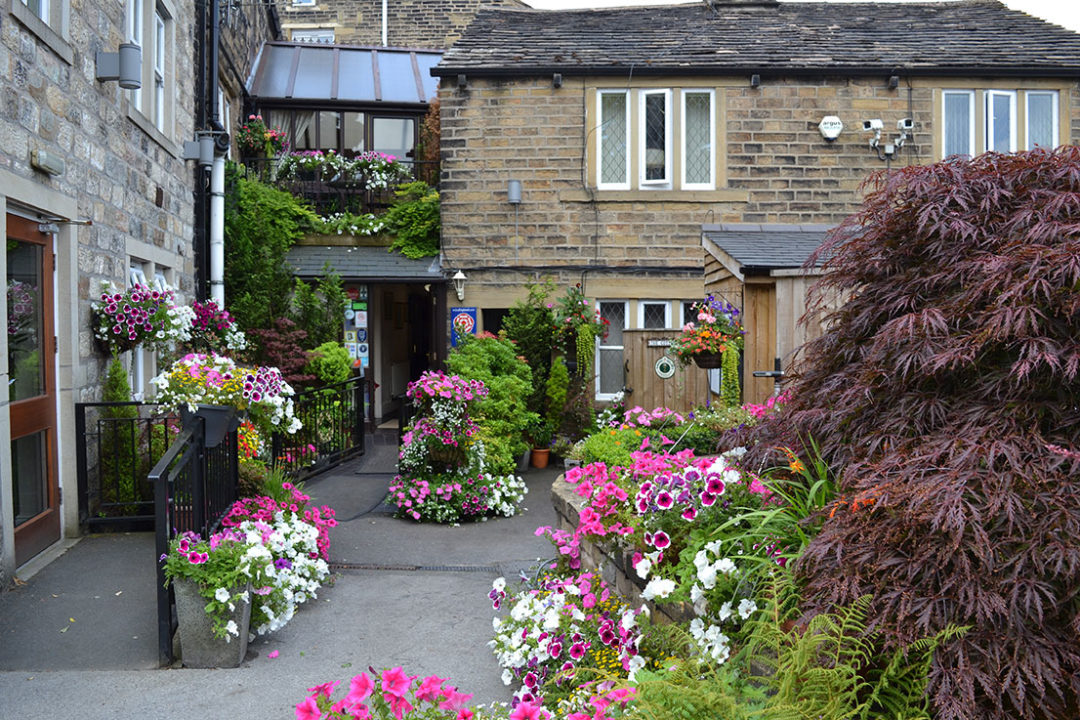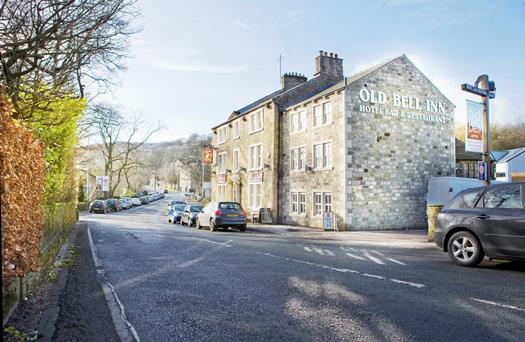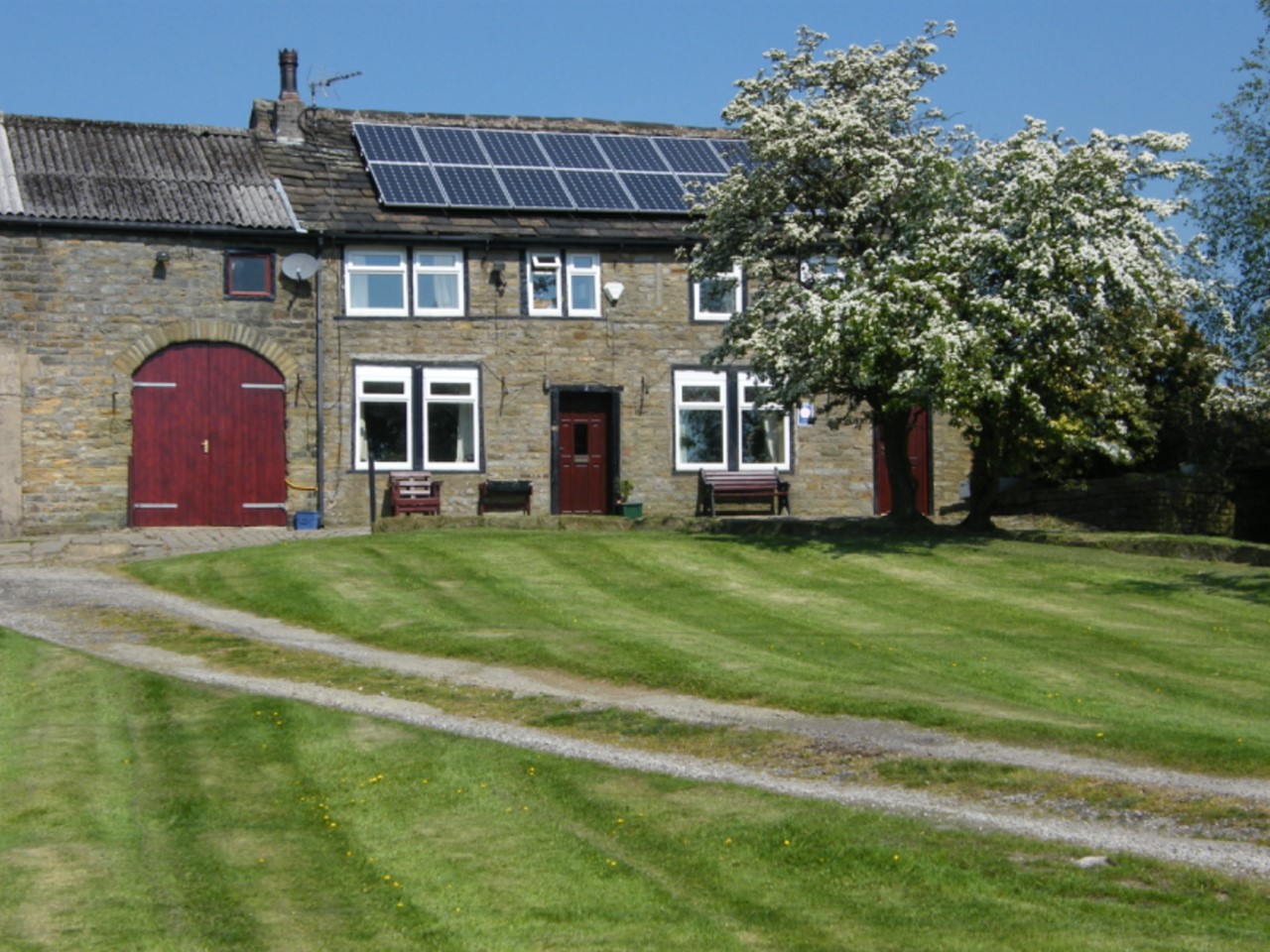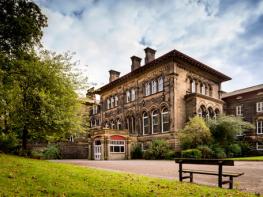A Self-Catering Cottage offering spectacular panoramic views and set within an established sheep…
The Upper Wardle Valley and Brown Wardle Hill

A lonely ramble around a once bustling valley
5.75 miles (9.3kms)
About the walk
Until the 1930s, Watergrove was a small but bustling hamlet beside the Ramsden Road, which climbed over the head of the valley to Ramsden and Todmorden. During the 19th century, Watergrove housed families drawn to area's mills that produced cotton, wool, worsted and flannel. It was also a focus for outlying farms and the numerous stone and coal workings dotted around the broad basin of the valley. Coal had been exploited since the 17th century, generally dug from drifts following the thin seams into the hillside, although there were some pits too. Their remains are the bare spoil heaps that litter the hillside.
Building the reservoir
All was changed with the construction of a dam by Rochdale Corporation to create a reservoir; a decision taken after the town suffered a serious water shortage during a drought. Work began in 1930 with one of the larger mills in the valley used as the project headquarters and workshops and a narrow gauge railway built to bring in materials. The scheme provided much-needed employment in an area hard hit by the Depression, giving work to more than 550 men. The Watergrove catchment on its own was not enough and three catchwater drains, two tunnelling through the hillside, brought water from neighbouring valleys. It was a considerable undertaking and took eight years to complete, creating a lake covering 96 acres (39 hectares) and up to 87ft (27m) deep.
A displaced community
Incorporated within the wall at the southeastern corner of the reservoir are date stones and architectural details rescued from the houses and mills that were demolished before the valley was flooded. These are poignant reminders of the small community displaced by the rising waters, but it was not just those in the base of the valley that were forced to move out. To ensure the purity of the reservoir's water, the farms, coal and stone workings on the hillside were cleared too, bringing an air of desolation to the upper valley.
Today, the mix of open moorland, marsh, woodland and water attracts many birds, while the surrounding heights offer spectacular views over the neighbouring moors and out beyond Manchester towards Cheshire. And, with a wealth of industrial archaeology to explore, the deserted network of tracks and paths criss-crossing the valley offer an imaginative step back in time.
Walk directions
A track climbs to the dam's eastern end and continues around the reservoir. Beyond a cattle-grid, a parallel path leaves through a kissing gate on the left, re-joining the main track at its end. Bear right past more parking and a building behind trees to a junction. Turn right with the old Ramsden Road, eventually reaching a fork.
Branch right. Leaving the Pennine Bridleway, the sets shortly give way to gravel and the wall's end. Ignore a track off right and carry on to a junction. Take the rough path ahead, which rises towards a nick in the skyline at the head of Higher Slack Brook.
At the top, cross the stream and keep left, shortly forking left again to remain beside a broken wall. The path leads around the valley head below spoil tips. Beyond a stile, continue on a now indistinct path past ruins and then a capped mineshaft. Over a slight rise, pass to the right of more ruins and walk on to another stile.
Bear left over soft ground, climbing past the corner of an old wall on a developing trod. Meeting a slanting rake, follow it down towards a conspicuous clump of sycamore. Continue over a stile, eventually re-joining the Pennine Bridleway by more trees. Keep ahead towards Whitworth, shortly dipping across a stream and rising to cross a broken wall.
Leave the path there, rising on a trod beside the wall. Over a stile, ignore a crossing path, soon joining a broader track swinging in from the left. Cresting the saddle, turn left on a clear path to the top of Brown Wardle Hill. Carry on ahead over the top for 0.75 miles (1.2km), dropping to converging paths in front of an embankment.
Walk on through a gap and immediately turn left on a track back up the valley. Keep ahead where it later swings through a gate, walking to a bridle gate a little further on.
Through the gate, head towards a grove of trees. Continue beyond them, eventually meeting a water channel. Leave the track there, crossing the channel to continue forward between gateposts along a narrow enclosure. Over a stile in the bottom fence, bear right towards the western end of the dam, slanting downhill through heather and saplings. Joining a broad path at the bottom, follow it right across the spillway and swing left across the dam. Steps drop down the banking back to the car park.
Additional information
Some tracks and good paths, but elsewhere indistinct and rough trods, not recommended for inexperienced walkers in poor weather, 5 stiles
Rough, upland moorland, scattered with the archaeology of farming and industry
Under control near grazing animals and moorland birds
OS Explorer OL 21 South Pennines
Car park below Watergrove Reservoir dam
None on route
WALKING IN SAFETY
Read our tips to look after yourself and the environment when following this walk.
Find out more
Also in the area
About the area
Discover Greater Manchester
The Greater Manchester conurbation incorporates the towns of Bolton, Oldham, Rochdale, Salford, Stockport and Wigan, and has the vibrant city of Manchester as its administrative headquarters.
Manchester was founded in Roman times, and developed during the 17th century as a textile town, becoming the centre of the English cotton industry. Its magnificent Victorian Gothic public buildings are reminders of Manchester’s prosperous heyday. The Manchester Ship Canal was completed in 1894, linking the Mersey with the sea and bringing ocean-going vessels into Manchester, enabling the city to compete with its rival, Liverpool.
The city of Manchester today is alive with a vibrant youth culture (it has England’s largest student population), a flourishing club scene, and a whole range of multi-cultural festivals and events. To take in the atmosphere, take a stroll around one of Britain’s largest Chinatowns, or wander down to Rusholme to take in the tempting aromas of curry houses and browse among the sari shops, Asian grocers and Indian sweet shops. The city is also home to the world’s longest-running soap opera – Coronation Street.
Nearby stays
Restaurants and Pubs
Nearby experiences
Recommended things to do
Why choose Rated Trips?
Your trusted guide to rated places across the UK
The best coverage
Discover more than 15,000 professionally rated places to stay, eat and visit from across the UK and Ireland.
Quality assured
Choose a place to stay safe in the knowledge that it has been expertly assessed by trained assessors.
Plan your next trip
Search by location or the type of place you're visiting to find your next ideal holiday experience.
Travel inspiration
Read our articles, city guides and recommended things to do for inspiration. We're here to help you explore the UK.













